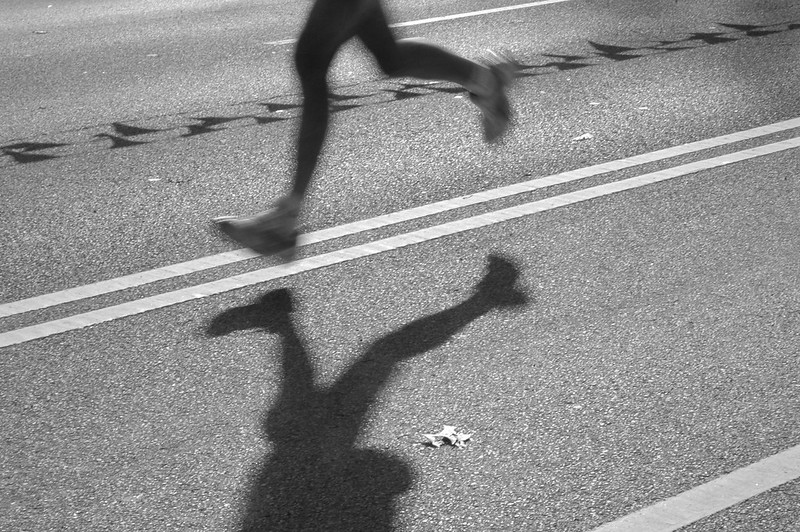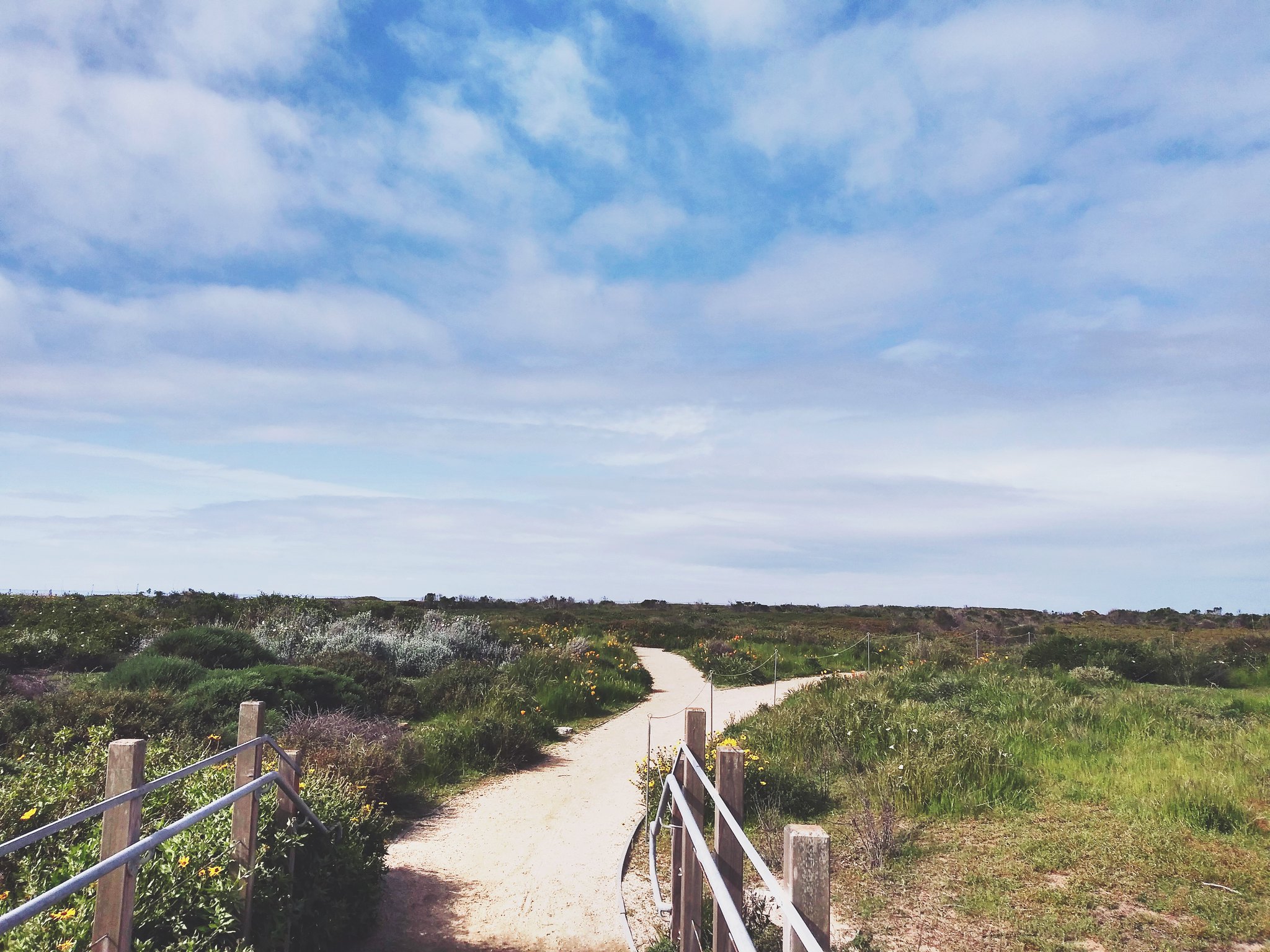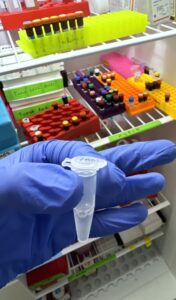It, in fact, hit me like a wall.
As I pushed past mile 20 in my first marathon, I felt the notorious ‘wall’. My glycogen stores were depleted, and my legs felt like they were no longer part of my body, but rather two 40 pound dumbbells I was lifting and dropping on the hard pavement with each step forward. Most distance runners would break down a marathon as a two-part race: cruising for the first 20 miles and fighting for the last 6.2 – both a mental and physical barrier to finishing the race. I shut off the music. Everything went quiet and my vision blurred. I became hyperaware of the tears quickly streaming down my face. A wave of emotions released from somewhere deep within me as I realized that I have broken from the cycle, and I am given a choice.
For the first 20 miles, I felt strong, steady and full of purpose. I have been training for this race physically. But as my legs gave out, I felt my mind give out, too. I was underprepared for the mental battle in negotiating with the voice in my head that said ‘You can stop anytime. You don’t have to keep going. 20 miles is quite a lot and an accomplishment, as is, and the furthest you have ever run. Nobody is making you do this.’
I am staring at the wall at mile 20 right now. Not just in the marathon, but in my academic training. As a recent PhD graduate in the MD/PhD program, I am now on the verge of returning to medical school in less than 2 months. After years of forward motion, one foot in front of the other, I had never felt the option to keep going, but rather the urge: complete the preclinical medical school blocks, one after another, pass the Step 1 Board Exam, start the PhD training, and continue to clerkships. It was a race with seemingly no stops, thoroughly enjoyable beyond my imagination but nonetheless an automatic sequence of events.
In this moment, I came to realize what had been weighing me down since completing my PhD a few weeks ago. It has been the constant internal battle of “I don’t have to do this. I don’t have to keep going.” To be perfectly candid, I felt scared more than ever as I realized that I could not agree more. I do not have to do this. I do not have to return to medical school. I have two years of my 20’s remaining, full of drive, curiosity, youth and ability, as opposed to the unknown state I will be in when I finish training closer to perhaps my 40’s. I could stop right now with the doctorate I earned, the skills I am equipped with and even reconsider pursuing a whole new career path.
The MD path has a natural momentum that carries one forward. You start medical school, the milestones are marked and you move alongside your peers if all goes according to plan. It’s steady and purposeful, but it is also a ride on a fast-moving bullet train. There is rarely a pause to ask, ‘is this still what I want?’ or ‘do I want to continue with the next step?’. We are informed of our expectations, told which lectures to attend, which rotations to complete, when to take the exams and what days are our breaks. On the other hand, in the MD/PhD journey, I get the chance to step away from the flow – carving out years in the PhD world, where the path is quite ambiguous and unique to every graduate student. For the first time since beginning my graduate education, I was asked questions in the PhD world like “what do you want to study?”, “what classes do you find interesting to enroll in?”, “what experiments do you want to run?”, and “when do you want to do them?”. I had the luxury to delve into discovering new science, as well as discovering new parts of myself and my curiosities, with more academic and personal independence than ever before. I was pushed in ways that made me uncomfortable and learn both in my scientific thinking and self-growth outside of science and medicine. Tackling the unknowns of my research gave me the courage to tackle the unknowns in my personal life – allowing me to complete my first sprint triathlon, make new lifelong friends outside of STEM while reinvesting into the ones I lost touch with, try trail running, tennis and skiing for the first time, and go on spontaneous road trips to places I dreamed of. I began exploring the wonders of my human self by pushing my boundaries and reading about the wonders of the universe outside of science and medicine. Ultimately, I started falling in love with the idea of the unknown and unexplored. Then one day, much more suddenly than I had anticipated, the time had come for me to hop back on the bullet train in the race of medicine.
But this is where the marathon became more than a ‘one foot in front of the other’ race for me. It was the moment I realized the autopilot mode had shut-off. It would be so easy to stop at mile 20. “What would happen if I stopped or paused? Can I keep going? Do I want to keep going?” Staying true to my academic training, I turned to literature for guidance and discovered, in fact, that attrition is nationally 9 times higher in the MD-PhD program than MD-only, with over 1 in 4 MD-PhD students not completing the dual-degree program.
I mapped out an Excel sheet of alternate life plans with application deadlines, prerequisites and calculated costs, a tangible way to entertain the idea of stepping off the track. After ruminating over each path countlessly, I found myself pulled back to where it all began. I decided, at this point, to revisit my personal statement with which I applied to medical school. I was reminded of my initial drive and excitement to become a physician-scientist, and today, I am choosing to continue. I stopped running because it’s the next logical step and started running because I made the choice, finishing off my first ever 26.2. I write this to reassure myself and others who may be staring at your own wall – it is okay to feel unsure, tired and question whether you want to finish the race. We love to ask the question and share the story of why we got on the bullet train in the first place and what it feels like to reach the destination. With this reflection piece, I hope to shed light on the doubts that live in the middle, where the growth in purpose happens.
As I return to medical school, it will not be because I am expected to finish. It will not be because I am afraid to quit or because of what others may think of me. It will be because I am choosing to finish what I started, not because I am ‘almost there’ but rather because I am in love with where I am going and the process of becoming.
I write this for anyone else who may be at mile 20 of their journey – to let you know that you are not alone. I hope you know that hitting the wall does not mean you are not cut out for this or that you are weak. I admire you for taking the time to reflect on the growth that will come out of whatever choice you may make. As I choose to keep going, I am grateful for this opportunity, more than ever before. I pause and acknowledge I am not the same person who started this race, and I hope to open myself to continue to welcome growth and change. I am taking the next intentional step forward, and I hope to see you at the finish line.
Image credit: “me myself and I on the road” (CC BY-NC-ND 2.0) by adropp


 Poetry Thursdays is an initiative that highlights poems by medical students. If you are interested in contributing or would like to learn more, please
Poetry Thursdays is an initiative that highlights poems by medical students. If you are interested in contributing or would like to learn more, please 



